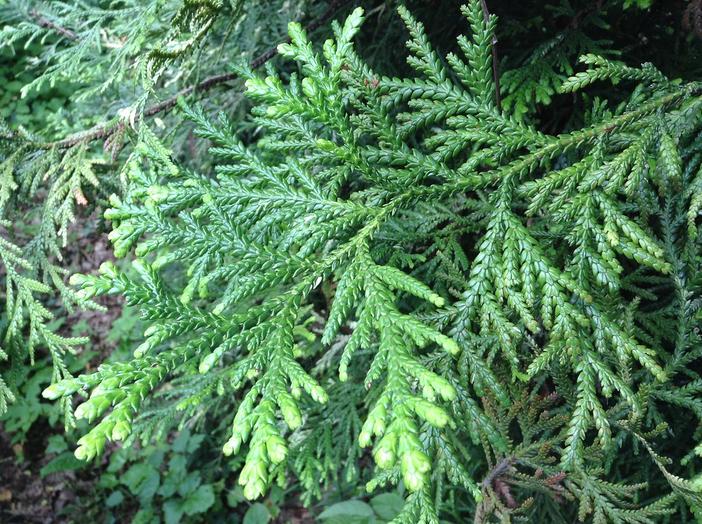Hiba
(Thujopsis dolabrata)
Hiba (Thujopsis dolabrata)
/
/

أبو فريد
PDM 1.0























Estimated Native Range
Summary
The Hiba Arborvitae is valued for its ornamental qualities, including its striking bark and lush foliage. It is often planted around temples in Japan, signifying its cultural importance, and is also used in gardens and urban landscapes in Europe and North America for its aesthetic appeal. The tree has earned the Royal Horticultural Society’s Award of Garden Merit in the UK, indicating its excellence for garden use. It requires consistently moist soil and is not drought-tolerant, making it suitable for areas with good rainfall or where reliable irrigation is available. It thrives in full sun to part shade and prefers acidic to neutral soils with good drainage. While generally disease-resistant, it can be susceptible to leaf blight and root rot if conditions are too wet.CC BY-SA 4.0
Plant Description
- Plant Type: Tree
- Height: 30-50 feet
- Width: 15-25 feet
- Growth Rate: Slow
- Flower Color: N/A
- Flowering Season: Non-Flowering
- Leaf Retention: Evergreen
Growth Requirements
- Sun: Full Sun
- Water: Medium
- Drainage: Fast, Medium, Slow
Common Uses
Deer Resistant, Hedges, Low Maintenance, Rock Garden
Natural Habitat
Cool temperate forests, often found in mountainous regions and alongside streams in Japan
Other Names
Common Names: False Arborvitae , Hiba Arborvitae , Hiba Arbor-Vitae , Asunaro , Hiba-Arborvitae , Zeravinec Japonský , Hiba-Lebensbaum , Japanische Zypresse , Tuya De Japón , Hibatuja
Scientific Names: Thujopsis dolobrata , Thujopsis dolabrata , Thujopsis dolabrata var. variegata , Thujopsis dolabrata var. nana , Thuyopsis dolabrata , Thujopsis dolabrata f. nana , Thuja dolobrata , Thujopsis dolabrata f. decumbens , Thujopsis dolabrata f. variegata , Thujopsis dolabrata var. latifolia
GBIF Accepted Name: Thujopsis dolabrata (Thunb. ex L.f.) Siebold & Zucc.